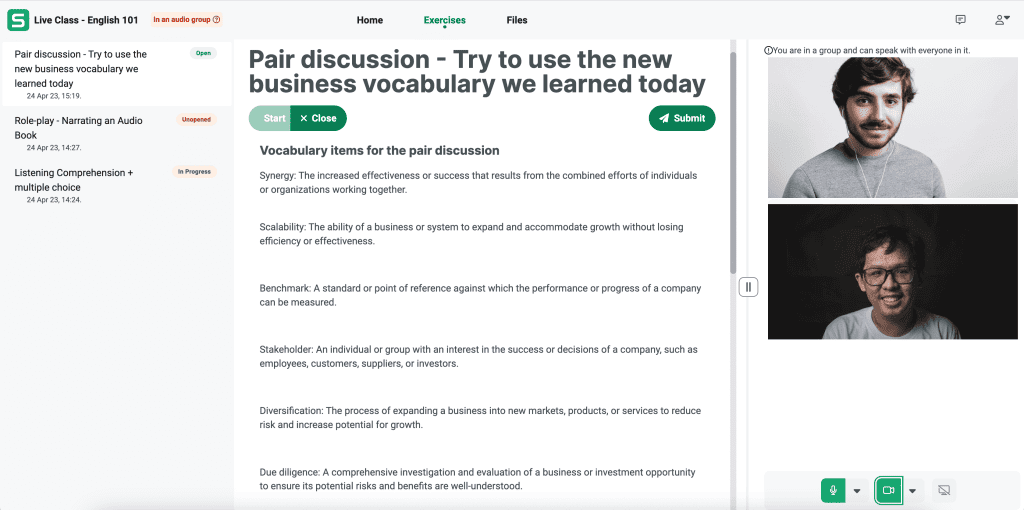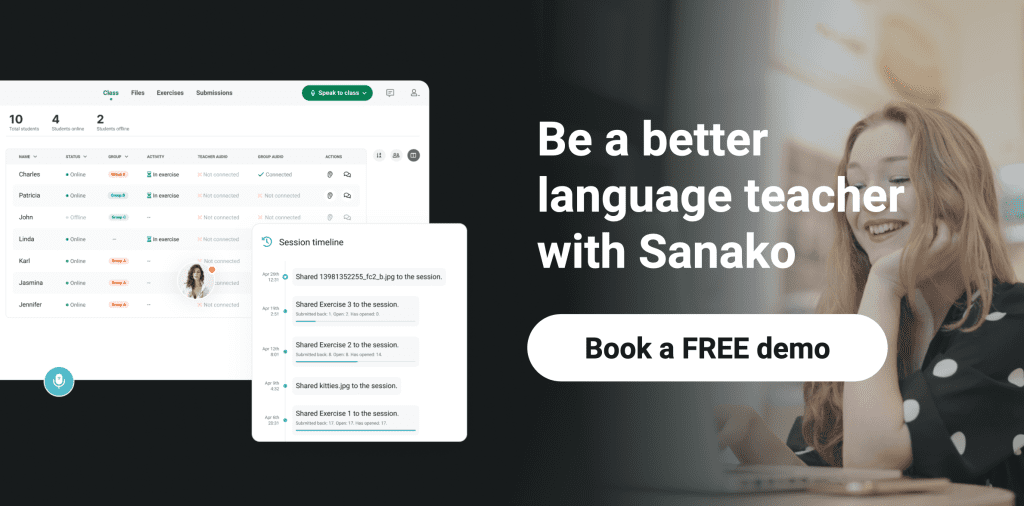In previous blog posts, we’ve looked at how language educators can use Sanako products, including Sanako Connect, to deliver lessons that follow different pedagogical approaches. These have included Content and Language Integrated Learning (CLIL) and Task-based Language Teaching (TBLT).
This new blog post explores how Project-Based Learning (PBL) can be a powerful technique to engage language learners, given its use of “inquiry and challenge to stimulate the growth and mastery of skills” (Markham, 2012). As well as outlining how the approach works in the traditional language classroom, we’ll also explore how Sanako Connect’s online language teaching functionality can support the full range of PBL lesson activities.
What is Project-Based Language Learning method (PBL)?
Project-Based Learning is defined by the Buck Institute for Education (2018) as a teaching method in which “students gain knowledge and skills by working for an extended period of time to investigate and respond to an authentic, engaging, and complex question, problem, or challenge.”
Such projects represent a real opportunity for teachers to engage their students in the subject matter and to make learning come alive. At the end of the project, students then present their findings and their work to an audience (real or virtual).
In recent years, some language educators have developed a framework to apply PBL to the specific requirements of language teaching. The framework below was developed by Jane-Maria Harding Da Rosa from IH Newcastle in 2018 for ELT teaching, but it can be easily adapted for other languages. Indeed Harding Da Rosa specifically details that it should be used to help educators to make their own version of PBL – so do give it a try!
So how could you use PBL approach in your language classroom?
The Buck Institute are acknowledged experts in the space and they identify the following seven key elements as exemplifying the Gold Standard in designing a PBL project.
- A Challenging Problem or Question
The project is framed by a meaningful problem to be solved or a question to answer, at the appropriate level of challenge.- Sustained Inquiry
Students engage in a rigorous, extended process of posing questions, finding resources, and applying information.- Authenticity
The project involves real-world context, tasks and tools, quality standards, or impact, or the project speaks to personal concerns, interests, and issues in the students’ lives.- Student Voice & Choice
Students make some decisions about the project, including how they work and what they create, and express their own ideas in their own voice.- Reflection
Students and teachers reflect on the learning, the effectiveness of their inquiry and project activities, the quality of student work, and obstacles that arise and strategies for overcoming them.- Critique & Revision
Students give, receive, and apply feedback to improve their process and products.Public Product
Students make their project work public by sharing it with and explaining or presenting it to people beyond the classroom.
The above elements also serve to emphasise the importance (as highlighted by Harding Da Rosa) of putting the student at the very heart of the project. It is, after all, their project and the project should, of course, reflect their interests and needs.
Clearly, educators will need to manage progress through each section of the project, working with learners to ensure that everyone benefits from the PBL approach. Part of that will be to ensure that language input is present at every stage and that opportunities to maximise key skill development (Listening, Reading, Speaking, and Writing) are optimised throughout.
It is worth noting, therefore, that PBL initiatives view language as an instrument to complete a particular task rather than as a piece of grammar or vocabulary to be practiced and learned. They, therefore, provide the learner with the opportunity to communicate in a variety of real-life scenarios, giving them the freedom to use the language they know and the chance to consider what they learned or need to improve on.
How can Sanako Connect help language teachers deliver PBL lessons?
With customers in 114 countries and users in over 50,000 classrooms, Sanako is well-positioned to understand the challenges that language educators face in their daily teaching practice. We know that every educator, institution, and lesson is different so it’s vital our products are highly flexible and can be used in a wide range of environments. This ensures that they’re able to support many different approaches to language teaching including PBL.
The unwritten addition to the 7 key elements of a PBL programme above is, of course, the provision of high-quality lesson materials and resources. Without a wide variety of resources to support and inspire students, engagement in the project will be minimal. Importantly, Sanako Connect makes it really easy for teachers to attach a wide variety of learning material (e.g. PDFs, presentations, videos, web pages, or even 3rd party applications) to the online project plan. Making Sanako Connect the perfect platform to share these materials with students wherever they are learning.
This screenshot from Sanako Connect shows an example live pair discussion activity where the teacher has instructed the student pairs to practice Business English using a pre-set list of vocabulary items.
Given the importance attached in PBL to building student contribution and voice, it’s essential that educators can provide opportunities to practice their listening, speaking, reading and writing. Importantly therefore at the heart of Sanako Connect, educators can easily divide students into pairs or small groups for conversation practice. Each group of students can talk simultaneously without distracting each other. Teachers can also set tasks that test their reading and writing skills. Connect’s flexibility enables teachers to upload stimulus material to which students can respond with detailed written answers of any length or by recording their input as an audio file.
Finally, Sanako Connect also provides the perfect online environment for students to present their outputs to their teachers. Connect provides a complete virtual language learning environment and participants can be invited to join via a unique link – no user accounts need to be set up.
If you’d like to find out more about Sanako’s language teaching software and how it can help language teachers deliver Project-Based Learning (PBL), click the button below to contact us and arrange your FREE demo!
References used in this article:
Oxford University Press ELT, 2018



